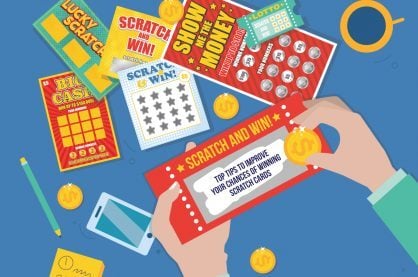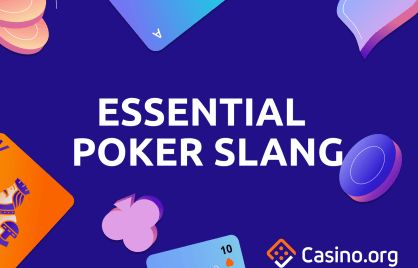RTP Decoded: The Smart Player’s Guide to Slot Machine Success
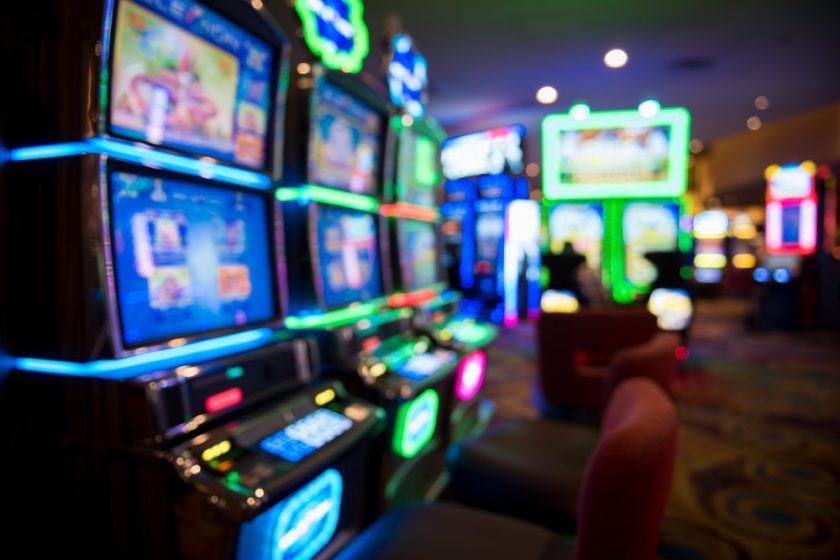
RTP Decoded: What You’ll Learn
- Understanding RTP: Learn what Return to Player (RTP) means and how it impacts your chances of winning on slot machines.
- How RTP Is Calculated: Discover how casinos determine RTP percentages and the factors that influence these calculations.
- Choosing the Right Slots: Gain insights on selecting slot machines with higher RTPs and what to look for when making your choice.
- Strategies for Maximizing Winnings: Explore effective strategies and bankroll management techniques to optimize your gameplay based on RTP.
- Common Myths Debunked: Identify and dispel common misconceptions about RTP and slot machine odds, helping you make informed decisions.
Walk into any casino and you’ll see them everywhere – rows upon rows of slot machines, each one blinking and beeping like a neon siren call to your wallet.
But here’s what the casinos don’t want plastered on a billboard: Not all slot machines are created equal.
Some will devour your money faster than a Vegas buffet line, while others offer you a fighting chance to walk away with more than lint in your pockets.
The secret weapon that separates smart players from slot machine fodder? Understanding RTP – Return to Player Percentage. This isn’t some mystical casino voodoo; it’s cold, hard mathematics that can dramatically improve your odds of success.
Let’s dive into the world of RTP and discover how to make your money work smarter, not harder.
What is RTP? (And Why Casinos Hope You Never Learn About It)
RTP stands for Return to Player – it’s the percentage of all wagered money that slot machines are programmed to pay back to players over time. Think of it as the machine’s “generosity rating.”
Here’s how it works in plain English:
- 96% RTP: For every $100 you feed into this machine, it’s designed to give back $96 over the long run
- 90% RTP: This machine keeps $10 out of every $100 you wager
- 98% RTP: Now we’re talking – this machine only keeps $2 per $100
IMPORTANT: Return to player is calculated over millions of spins, not your single session. You might hit a jackpot on your first spin or lose your entire bankroll – that’s the nature of gambling variance.
The Return to Player Reality Check
Here’s the brutal truth about RTP across different casino games:
Game Type Typical Return to Player Range House Edge
| Slot Machines | 85% – 98% | 2% – 15% |
| Video Poker | 95% – 99.5% | 0.5% – 5% |
| Blackjack | 99%+ | Under 1% |
| Roulette | 94% – 97% | 3% – 6% |
| Keno | 75% – 80% | 20% – 25% |
Notice something? Slots generally offer the worst odds in the casino. But here’s the kicker – within the slot category, RTP varies dramatically. Choose wisely, and you can find slots with RTPs comparable to table games.
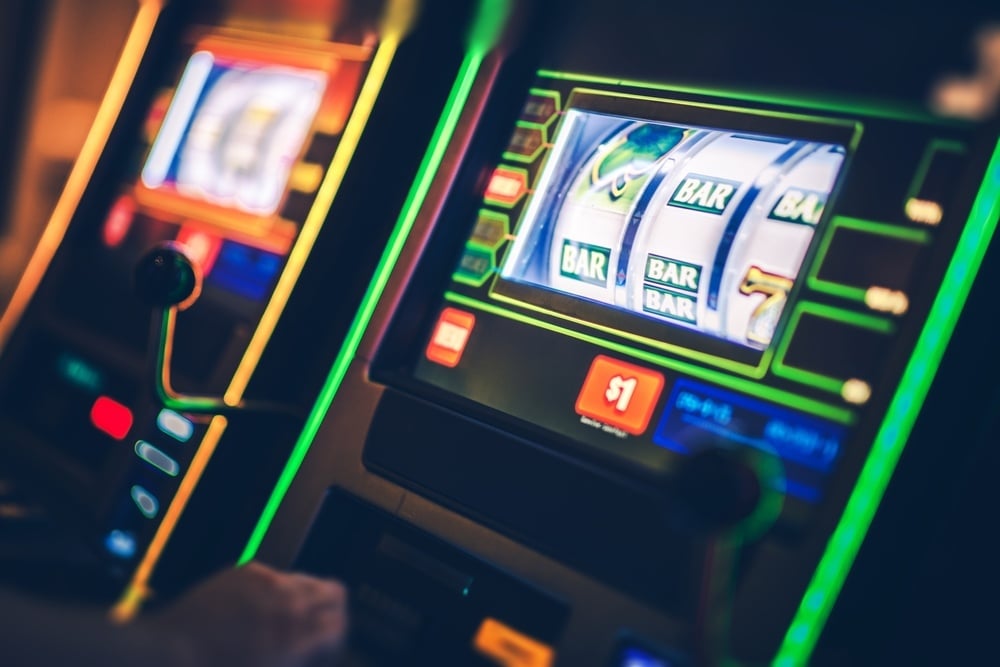
Image Credit: Audio und werbung/Shutterstock
The Slot Machine RTP Hierarchy: From Terrible to Terrific
The Bottom Feeders (80-90% RTP)
These are typically found in:
- Airport slot machines (captive audience = terrible odds)
- Gas station “casinos”
- Some penny slots (the house needs to make money on small bets)
Avoid these like a timeshare presentation.
The Middle Ground (88-95% RTP)
- Most standard casino floor slots
- Many online slots
- Progressive jackpot games (lower base RTP because of the jackpot contribution)
The Sweet Spot (96-98% RTP)
- High-limit slots ($5+ per spin)
- Video poker variations
- Some online slots from reputable providers
This is where smart players focus their attention.
The Unicorns (98%+ RTP)
- Specific video poker games (Jacks or Better, Deuces Wild)
- Some high-end slot machines
- Certain online slots with promotional RTPs
How to Find RTP Information (The Casino’s Best-Kept Secret)
Casinos aren’t required to post RTP information prominently, but here’s how to track it down:
- Check the machine’s help screen (often buried in menus)
- Ask slot attendants (they usually know)
- Look for state gaming commission reports (some states require RTP disclosure)
- Higher denomination usually = higher RTP (general rule of thumb)
In Online Casinos:
- Game information screens (usually accessible via “i” or “?” buttons)
- Casino websites often list RTP in game descriptions
- Game provider websites (NetEnt, Microgaming, etc.)
- Third-party review sites like ours Red Flags to Avoid:
- Any slot that doesn’t display RTP information
- Casinos that refuse to provide RTP data
- Games with suspiciously vague payout descriptions
RTP vs. Volatility: The Dynamic Duo of Slot Strategy
Understanding RTP is only half the battle. Volatility (or variance) determines HOW that RTP is delivered.
Low Volatility Slots
- Frequent small wins
- Steadier bankroll depletion
- Good for extended play sessions
- Examples: Most classic 3-reel slots, standard Video Slots, etc.
Medium Volatility Slots
- Balanced win frequency and size
- The “Goldilocks zone” for most players
- Examples: most slots from the Majors, like IGT, Aristocrat, Konami, AGS, etc.
High Volatility Slots
- Rare but massive wins
- Long dry spells followed by big hits
- Requires larger bankroll
- Examples: most High-Limit and 3-reel slots with $1 or higher per-credit denomination;
Smart Strategy: Match volatility to your bankroll and playing style. Got $50 for a quick session? Stick to low volatility. Planning a longer session with a bigger bankroll? Medium to high volatility can work.
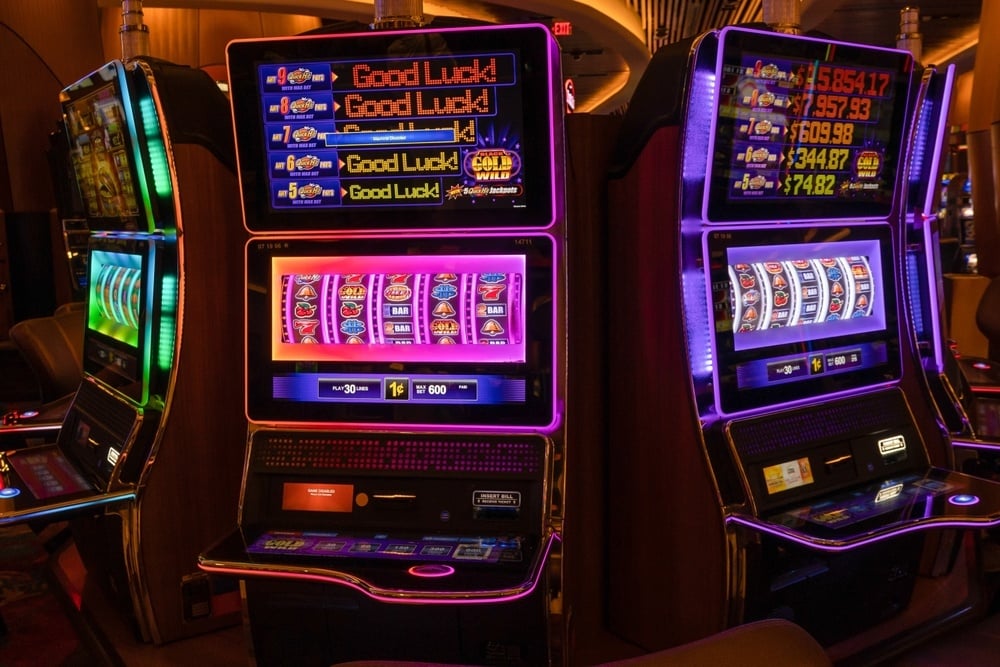
Image Credit: Kirkam/Shutterstock
The Mathematics of Smart Slot Play
The 5% Rule for Slot Selection
Whenever possible, avoid playing slots with an RTP below 95%. Here’s why:
- 95% RTP: House edge of 5%
- 90% RTP: House edge of 10% (twice as bad!)
- 85% RTP: House edge of 15% (you’re bleeding money)
Every percentage point matters when you’re talking about hundreds or thousands of spins.
The Denomination Sweet Spot
Generally speaking, higher denomination slots offer better RTPs:
- Penny slots: 86-93% RTP (casinos need higher house edge on small bets)
- Nickel slots: 90-95% RTP
- Quarter slots: 92-96% RTP
- Dollar slots: 94-98% RTP
- High-limit slots ($5+): 96-99% RTP
But beware: A $5 slot with 98% RTP still costs more per spin than a quarter slot with 95% RTP.
Online vs. Land-Based: The RTP Difference
Online Casinos: The RTP Advantage
- Generally higher RTPs (lower overhead costs)
- Better transparency (RTP usually displayed)
- More competition (forces better player odds)
- Typical range: 94-98% RTP
Land-Based Casinos: The Experience Premium
- Lower RTPs (higher operating costs)
- Less transparency (RTP rarely posted)
- Captive audience (less pressure to offer great odds)
- Typical range: 85-95% RTP
Bottom Line: If pure mathematics is your game, online slots generally offer better value.
Bonus Features: The RTP Wild Cards
Modern slots aren’t just about base game RTP. Bonus features can dramatically impact your real-world returns:
RTP-Boosting Features:
- Free Spins: Extra chances without extra cost
- Multipliers: Amplify winning combinations
- Pick-and-Click Bonuses: Additional payout opportunities
- Cascading Reels: Multiple wins from single spins RTP-Neutral Features:
- Wild Substitutions: Help create wins but don’t add value
- Scatter Pays: Replace line-based wins
- Expanding Reels: More ways to win, but usually balanced by lower base pays
Pro Tip: Look for slots where bonus features add to rather than replace base game payouts.
The Progressive Jackpot Paradox
Progressive jackpot slots present a mathematical dilemma:
The Downside:
- Lower base RTPs (typically 92-95%)
- Money diverted to jackpot pool
- Millions-to-one odds of hitting the big one The Upside:
- Life-changing jackpots (when they hit)
- Secondary progressive prizes often available
- Excitement factor can’t be quantified
Smart Approach: Only play progressives when:
- The jackpot is significantly above average (indicating positive expected value)
- You can afford the higher house edge
- You’re playing for entertainment, not profit
Bankroll Management for RTP Optimization
The 300-Spin Rule
Always bring enough money for at least 300 spins at your chosen denomination. Here’s why:
- Short-term variance can be brutal
- RTP needs time to manifest
- Gives bonus features time to trigger Example Bankroll Calculations:
- $0.25 per spin: Bring $75 minimum
- $1.00 per spin: Bring $300 minimum
- $5.00 per spin: Bring $1,500 minimum
The 50/50 Win Rule
When you double your session bankroll, immediately pocket 50% of the profit. This ensures you lock in gains while the mathematical tide is in your favor.
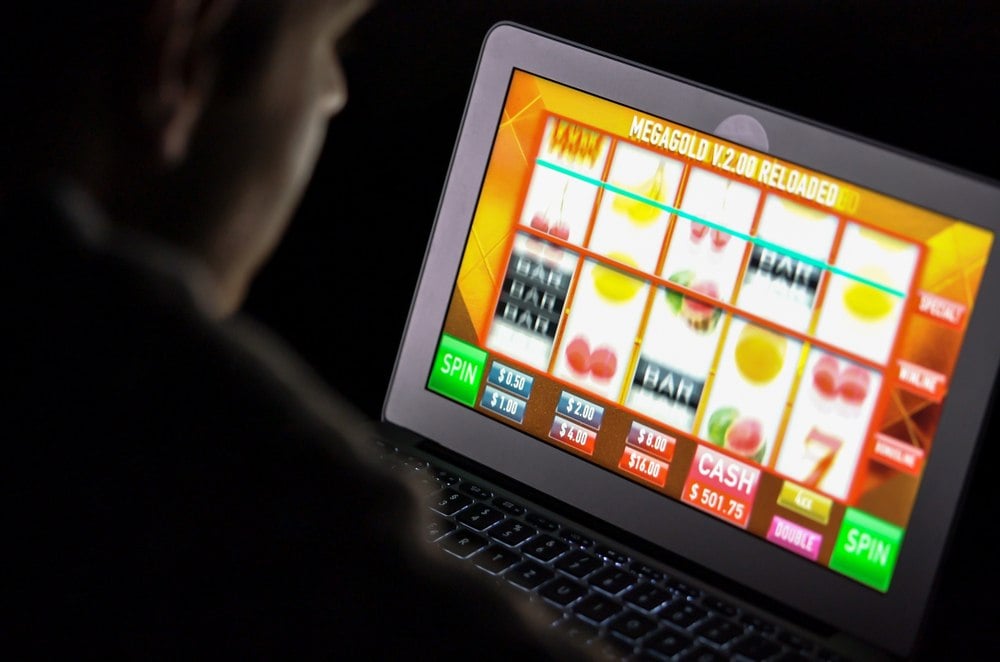
Image Credit: Virrage Images/Shutterstock
Common Return to Player Myths (Busted!)
MYTH: “This machine is due to hit”
REALITY: Every spin is independent. Past results don’t predict future outcomes.
MYTH: “Hot and cold machines exist”
REALITY: RNG (Random Number Generator) ensures true randomness on every spin.
MYTH: “Casinos can remotely change RTP”
REALITY: Most jurisdictions require physical changes to alter RTP settings.
MYTH: “Time of day affects RTP”
REALITY: RTPs are constant, regardless of when you play.
MYTH: “Player cards reduce your chances”
REALITY: Using your player card has zero impact on RTP but earns valuable comps.
The Online Casino RTP Advantage
Why Online Slots Generally Offer Better RTPs:
Lower Overhead Costs:
- No physical real estate
- Fewer staff members
- Lower utility bills
Increased Competition:
- Thousands of online casinos competing
- Easy for players to shop around
- Transparent RTP information
Regulatory Requirements:
- Many jurisdictions mandate minimum RTPs
- Regular third-party auditing
- Public reporting requirements
Top Online Slot Providers by RTP:
- NetEnt: 96-98% average RTP
- Microgaming: 95-97% average RTP
- Play’n GO: 94-97% average RTP
- Pragmatic Play: 96-97% average RTP
Advanced RTP Strategies for Serious Players
The Portfolio Approach
Don’t put all your eggs in one slot machine basket. Diversify across:
- Different RTPs (mix of 96%, 97%, 98% games)
- Various volatilities (low, medium, high)
- Multiple game types (slots, video poker, table games)
The Session Stop-Loss Strategy
Set a loss limit of 25% of your session bankroll. When you hit it:
- Take a break (minimum 30 minutes)
- Switch to a different RTP/volatility
- Consider ending the session
The RTP Arbitrage Method
Seek out promotional RTPs that exceed normal levels:
- New game releases (often feature boosted RTPs)
- Happy hour promotions (temporary RTP increases)
- VIP player bonuses (exclusive high-RTP games)
Mobile vs. Desktop: Does RTP Change?
Good news: RTP remains constant across platforms. Whether you’re playing on:
- Desktop computer
- Mobile phone
- Tablet
- Land-based machine
The RTP is identical. However, consider these factors:
Mobile Advantages:
- Play anywhere (more opportunities to find good RTPs)
- Exclusive mobile bonuses (can boost effective RTP)
- No travel costs (saves money for gambling) Desktop Advantages:
- Larger screens (easier to read RTP information)
- Better multitasking (research RTPs while playing)
- More stable connections (fewer interrupted sessions).
Red Flags: When to Walk Away
Immediate Deal-Breakers:
- No RTP information available
- RTP below 92%
- Casino refuses to discuss RTPs
- Suspicious payout patterns
- No regulatory oversight Warning Signs:
- RTPs significantly below industry average
- Vague or misleading RTP descriptions
- No third-party auditing
- Poor customer service regarding RTP questions
Remember: Your money, your choice. Don’t settle for subpar RTPs when better options exist.

Image Credit: Pablo Rogat/Shutterstock
Maximizing Comps While Chasing High RTPs
The Smart Player’s Approach:
- Find high-RTP games (96%+ preferred)
- Always use your player card (for comps and tracking)
- Play at optimal betting levels (balance RTP with comp earn rate)
- Take advantage of multiplier days (double/triple comp points) Comp Calculation Strategy:
- Theoretical loss = Coin-in × House Edge
- Comps typically = 10-40% of theoretical loss
- Higher RTPs = Lower theoretical loss = Better value
Example: Playing a 98% RTP slot gives you better comp value than a 92% RTP slot at the same betting level.
The Bottom Line: Your RTP Action Plan
Step 1: Research RTPs before you play
- Online: Check game info screens and provider websites
- Land-based: Ask staff or research state gaming reports
Step 2: Set minimum RTP standards
- Generally avoid play below 92% RTP (but sometimes you just can’t, so be careful)
- Prefer 96%+ RTP when possible
- Accept lower RTPs only for specific entertainment value
Step 3: Match RTP to your goals
- Quick entertainment: High volatility, high RTP
- Extended play: Low volatility, medium-high RTP
- Jackpot hunting: Accept lower base RTPs for progressive potential
Step 4: Track your results
- Monitor your actual returns vs. theoretical RTP
- Adjust strategy based on results
- Stay disciplined with bankroll management
Step 5: Keep learning
- RTP information changes as new games are released
- Regulations evolve in different jurisdictions
- Technology advances create new opportunities
Final Thoughts: The RTP Edge
Understanding return to player percentage won’t guarantee you’ll win every session – gambling is still gambling. But armed with this knowledge, you can:
- Choose better games with superior mathematical odds
- Avoid the worst bets in the casino
- Stretch your entertainment dollar further
- Make informed decisions based on facts, not hunches
The casino industry hopes you’ll remain ignorant about return to player. They’d prefer you choose games based on flashy graphics and clever marketing rather than mathematical reality. Don’t give them that advantage.
Smart players understand that every percentage point matters over the long run. The difference between a 92% RTP slot and a 97% RTP slot might seem small, but it’s the difference between losing $8 per $100 wagered versus losing $3 per $100 wagered.
In the world of casino gambling, knowledge truly is power. Use it wisely.
And now you know!
So until next time – Best of Luck to all!
Title Image Credit: Pablo Rogat/Shutterstock
